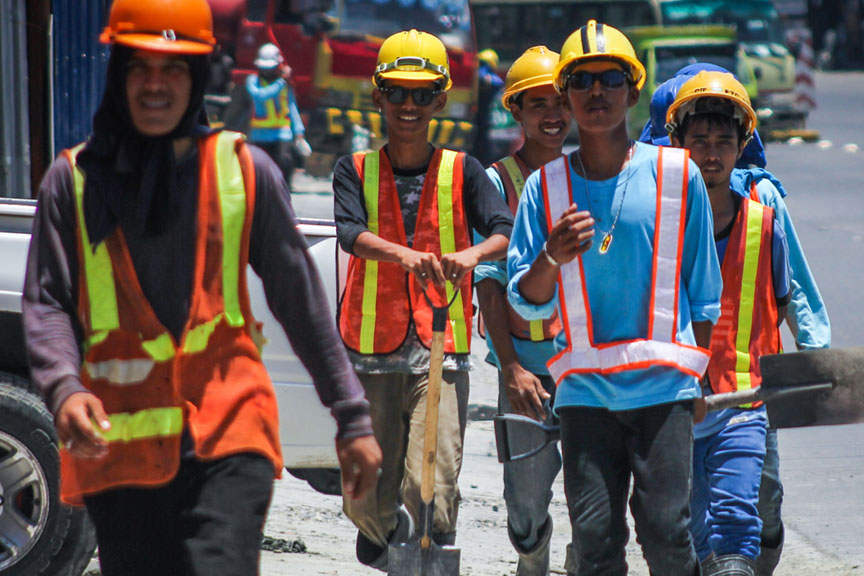DAVAO CITY (MindaNews / 27 August) – The employment rate in Davao Region decreased to 82.1 percent as of 2nd quarter of 2020 amid the coronavirus disease (COVID-19) pandemic, National Economic Development Authority (NEDA)-Davao Region director Maria Lourdes Lim said.
In her report during the virtual launch of Davao Regional Development Plan 2017-2022, Lim said the current employment figure dropped by 14.8 percentage points from 96.9 percent reported in the same period of last year.
The drop caused the unemployment rate to rise to 17.9 percent during the period reported.
The region’s labor force was estimated at 1.965 million, of whom 1.614 million were employed, according to Lim.
 Construction workers in Davao City. MindaNews file photo by KEITH BACONGCO
Construction workers in Davao City. MindaNews file photo by KEITH BACONGCO
Davao de Oro Gov. Jayvee Tyron Uy, Regional Development Council chair, acknowledged that the region suffered huge losses in the second quarter due to the lockdowns during the quarantine period to manage the spread of COVID-19.
“We have big losses in our economy because of the pandemic, particularly service and tourism industries,” he said, adding that small hotels, restaurants, inns, among others, have been shut down as a preventive measure against the disease.
With the region in recovery stage following the shift to modified general community quarantine, Uy added that industries have been slowly opening up while provinces allowed tourism activities to resume at a limited capacity to restart the economy, potentially generating employment.
“We are opening gradually because we still have to maintain the minimum health standards prescribed to us by the Department of Health to minimize the transmission of COVID,” he said.
Meanwhile, Lim said the inflation rate in the region was at two percent in the second quarter of this year, which was lower compared to 3.6 percent recorded in the same quarter in 2019.
“This low and stable inflation rate during the second quarter of 2020 was attributed to the decrease of inflation rate particularly of housing water, electricity, and other utilities, including transport and maintenance and furnishing of households,” she added. (Antonio L. Colina IV/MindaNews)
